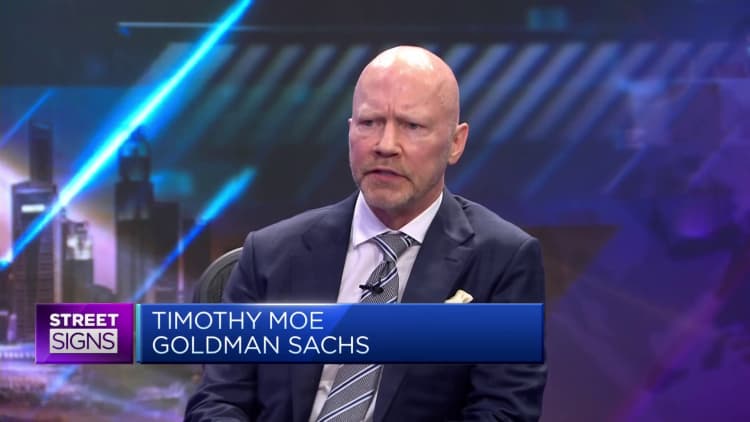Bank of China is one of the major state-owned banks in China. The picture shows a branch in Shanghai on March 27, 2023.
Bloomberg | Bloomberg | Getty Images
BEIJING — China’s biggest banks cut interest rates for depositors on Thursday in a bid to boost economic growth amid a sluggish recovery in consumption.
The websites of six of China’s state-owned commercial banks all show an updated yuan demand deposit rate of 0.2 percent, down from 0.25 percent last year, according to a CNBC check. demand deposit Withdrawals are allowed at any time.
The bank cut rates on other deposit products, including reducing the rate on five-year time deposits to 2.5 percent from 2.65 percent, according to its website.State run Securities Times report The deposit rate was cut in Thursday’s edition of the paper.
These rate cuts will help boost banks’ profitability and lay the groundwork for the PBOC to lower other interest rates, Nomura analysts said.

“We think the cut in bank deposit rates sends a strong signal that the PBOC is paving the way for a cut in the benchmark lending rate (MLF) to guide the LPR,” Nomura chief China economist Ting Lu and his team said in a note. express.
The median lending rate is due on June 15, while the prime lending rate is scheduled to be announced on June 20.
The more important issue is reducing unemployment. Families who are more confident in their jobs spend more.
Zhiwei Zhang
Chief Economist, Pinpoint Asset Management
“A fresh round of deposit rate cuts, along with rapidly deteriorating exports, widening housing distress, persistent deflation and a likely pause in Fed rate cuts, bolster our confidence in the call for rate cuts,” the analysts said, noting they have been calling for a rate cut since mid-May. , MLF and LPR interest rates were cut by 10 basis points.
The People’s Bank of China has not changed either rate for nine months. The MLF one-year interest rate was 2.75% in May, while the one-year LPR was 3.65% and the five-year LPR was 4.3%.
China has kept interest rates low, in stark contrast to the U.S. and other major countries that have aggressively raised rates to curb inflation.
impact on consumption
Lower interest rates give businesses more incentive to borrow. Lower deposit rates make it more expensive for people to keep their money in banks, theoretically increasing their incentive to spend.
In the first quarter, 58 percent of household savers said they would prefer to save rather than spend or invest, according to a survey by the People’s Bank of China. This is the lowest level in a year.
However, that is not to say that lower deposit rates will immediately translate into bigger payouts.
Zhiwei Zhang, president and chief economist at Pinpoint Asset Management, said in an email that the cuts are “margin positive, but unlikely to significantly boost household spending.”
“The bigger issue is lowering unemployment. Households who are more confident in their jobs spend more,” he said.
Youth unemployment hit a record high in April, exceeding 20%. China will release May retail sales and unemployment data on June 15.


